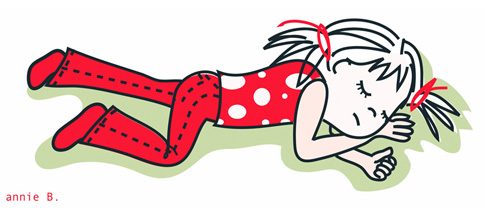Acute poisoning - Children
Poisoning accidents among children occur most frequently between the ages 1-3 when they start to explore the environment. In most cases the child needs no treatment at all; it may be sufficient to just give something to drink, or sometimes, activated charcoal. Occasionally the child may need to be examined and treated by a doctor at a clinic or an emergency room. Don't wait for symptoms to occur; call The Poison Centre immediately to get advice.
Important
- A child who has difficulty breathing, increasing drowsiness, unconsciousness or convulsions must seek medical attention immediately. Call 112 for an ambulance.
- A child that is unconscious should be put in a semi-prone position (see the picture below) to prevent the tongue from obstructing the airway and aspiration of vomit or stomach acid.
- If the child stops breathing, assisted ventilation may be required.

Chemical products
Household chemical products are the most common cause of poisoning accidents among children. If a child tastes a small amount of shampoo or detergent, it is often sufficient to give the child something to drink. There are some products that are highly caustic, such as 24% acetic acid, lime remover, drain cleaner and ammonia. Another group of dangerous products are petroleum-based solvents and fuels. They are easily aspirated and can cause a chemical pneumonia.
First aid
Ingestion
Give the child something to drink.
- If a corrosive substance has been swallowed, rinse the mouth immediately with plenty of water and give the child something to drink. Do NOT induce vomiting
- If a petroleumproduct has been swallowed, give the child a couple of tablespoons of cream; do not force the intake and don't give cream if the child shows any symptoms. Do NOT induce vomiting. If the child vomits, coughs or has difficulty breathing, seek medical attention immediately.
- Call The Poison Centre for more advice.
Note: Never give anything by mouth to a child who is lethargic or otherwise affected.
Eye Exposure
- Immediately rinse the eye with plenty of water for at least 5 minutes.
- If it is a corrosive substance, rinse for at least 15 minutes and seek immediate medical attention. Continue rinsing the eye during transportation to the hospital.
- Call The Poison Centre for more advice.
Skin Exposure
- Immediately rinse the skin with plenty of water, and then wash the affected area thoroughly with soap and water.
- Remove contaminated clothing.
- Call The Poison Centre for more advice.
Inhalation
- Move the child into fresh air.
- After inhalation of some toxic or irritating gases, it is important to rest and avoid exertion.
- Call The Poison Centre for more advice.
Drugs
Some drugs are hazardous even if swallowed in small amounts. If the child has swallowed a less toxic drug, it might be sufficient to administer activated charcoal, and/or observe the child at home. Call The Poison Centre immediately for more advice.
Mushrooms
Generally the risk is low when a child eats one or two small mushrooms that grows on the lawn, or tastes a small amount (about the size of a sugar cube) of a larger mushroom. Keep the mushroom in case it needs to be identified later. Call The Poison Centre for more advice.
Tobacco
It is generally not dangerous if a child ingests tobacco from one cigarette. Sometimes the child will feel generally sick or become nauseous.
Nicotine in snuff, chewing gum or tablets is readily absorbed both from the mucous membrane in the mouth and in the stomach. If a child tastes one of these products it often results in vomiting, cold sweats, drowsiness and palpitations. Call The Poison Centre to get advice if the child develops symptoms, or has ingested more than one cigarette, more than 1/2 teaspoon of snuff, or more than 4 mg nicotine from chewing gum or tablets.
Plants
In most cases it is not dangerous if a child ingests a few berries or a small amount from a plant. However, there are a few plants that are highly toxic. Some plants also contain an irritating sap.
Call The Poison Centre for advice if you think the child has ingested a poisonous plant.
Plants that contain irritating sap:
- Ingestion: Give the child something to drink immediately.
- Skin exposure: Wash skin thoroughly with soap and water.
- Eye exposure: Immediately rinse eye with plenty of water for about 5 minutes.